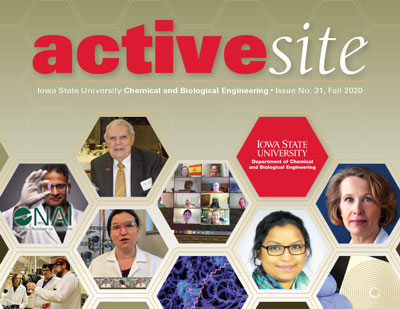“Predicting breakup is hard to do.” Those are the words of Professor R. Dennis Vigil, an Iowa State University chemical engineering professor.
What he’s talking about is the understanding of a vexing research issue: How immiscible droplets of liquid suspended in another liquid (think oil and water) break apart when agitated. It is this knowledge that is important to industrial processes involving emulsification, like the homogenization of milk and various other food products and emulsion polymerization, a process that creates polymers used in things such as synthetic rubber and latex paints.
Over several decades, many models for droplet breakage events in turbulent flow have been developed for application to these and other chemical manufacturing processes where greater control over mass transfer is crucial for producing products both reliably and efficiently,
according to Vigil. “Although drop breakage has been studied for a long time, the existence of multiple breakage mechanisms and the lack of well-controlled experiments capable of producing detailed information to understand the underlying physics of drop breakage has hindered the development of mathematical and computational models that accurately predict breakage rates and droplet size distributions.”
To address these shortcomings, Vigil is working with his chemical engineering colleague, Anson Marston Distinguished Professor in Engineering and Hershel B. Whitney Professor, Global Initiatives Rodney Fox, as well as Michael Olsen, a professor in the Department of Mechanical Engineering at ISU. The three have developed a new fluid flow apparatus for studying drop breakage that provides the means for carefully controlling the fluid flow characteristics while also providing optical access for high-speed photography of breakup events and acquisition of 3D velocity fields. The data obtained from this apparatus could provide a much deeper understanding of the physics of drop breakage and the development of new models for prediction and control of processes involving breakage.
Although Fox, Vigil and Olsen have all previously worked to better understand the behavior of dispersed phase bubbles, their current work was catalyzed when Fox came across a paper by French physicists who used a specially-designed small box called a von Karman swirling flow apparatus to generate uniform mixing so that they could observe the breakup of clusters of solid particles. He recognized that this technique for generating homogeneous isotropic turbulence (uniform mixing) could be used for droplet breakup studies.
The project is being done in collaboration with the German company BASF, one of the largest chemical producers in the world, and through Iowa State’s Center for Multiphase Flow Research and Education (CoMFRE), which integrates the skills of ISU investigators and industrial members to deliver advances in the field to industrial applications and end-users.
The research lab space in Sweeney Hall includes a recently-constructed area of framework, platforms and special pieces of apparatus, including lasers and high-speed photography equipment that gets to the heart of the matter.
“One of the main limitations of previous studies of droplet breakage is the lack of control of the fluid mixing,” Vigil explains. “Stirred tanks, which are widely used in industry because of their simplicity, have turbulence characteristics that are spatially very non-uniform, which in turn complicates the understanding of how the fluid mixing impacts drop breakup.” In addition, the apparatus features precise control of the size of the droplets introduced into the flow cell before they undergo breakage.
Regarding their method of introducing droplets into the von Karman box. “This is another variable over which we have unprecedented control compared to previous studies,” says Vigil.
High-speed photography of drop breakage events, a laser-based method called particle image velocimetry (PIV) is being employed to gather detailed information about the fluid flow around droplets undergoing breakage.
According to Vigil, PIV combined with high-speed photography of individual breakage events will make it possible to rigorously evaluate the validity of existing drop breakage models and to propose improved models. “The expertise in particle image velocimetry brought to this project by Prof. Olsen, who has decades of experience using this method, is a crucial factor in the success of the project.”
Work continues with a variety of parameters employed. Following further research, a paper presenting the team’s discoveries is planned.
